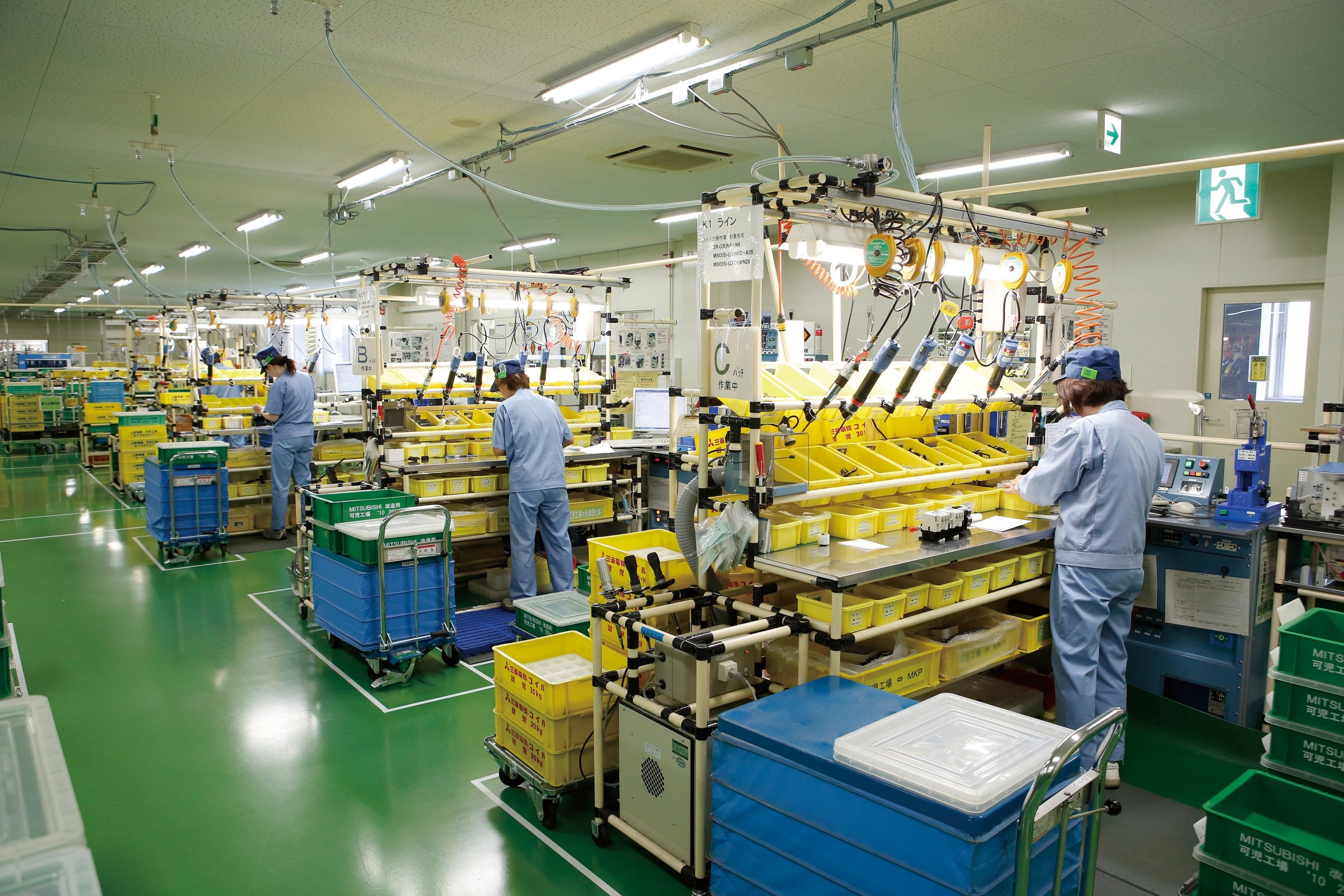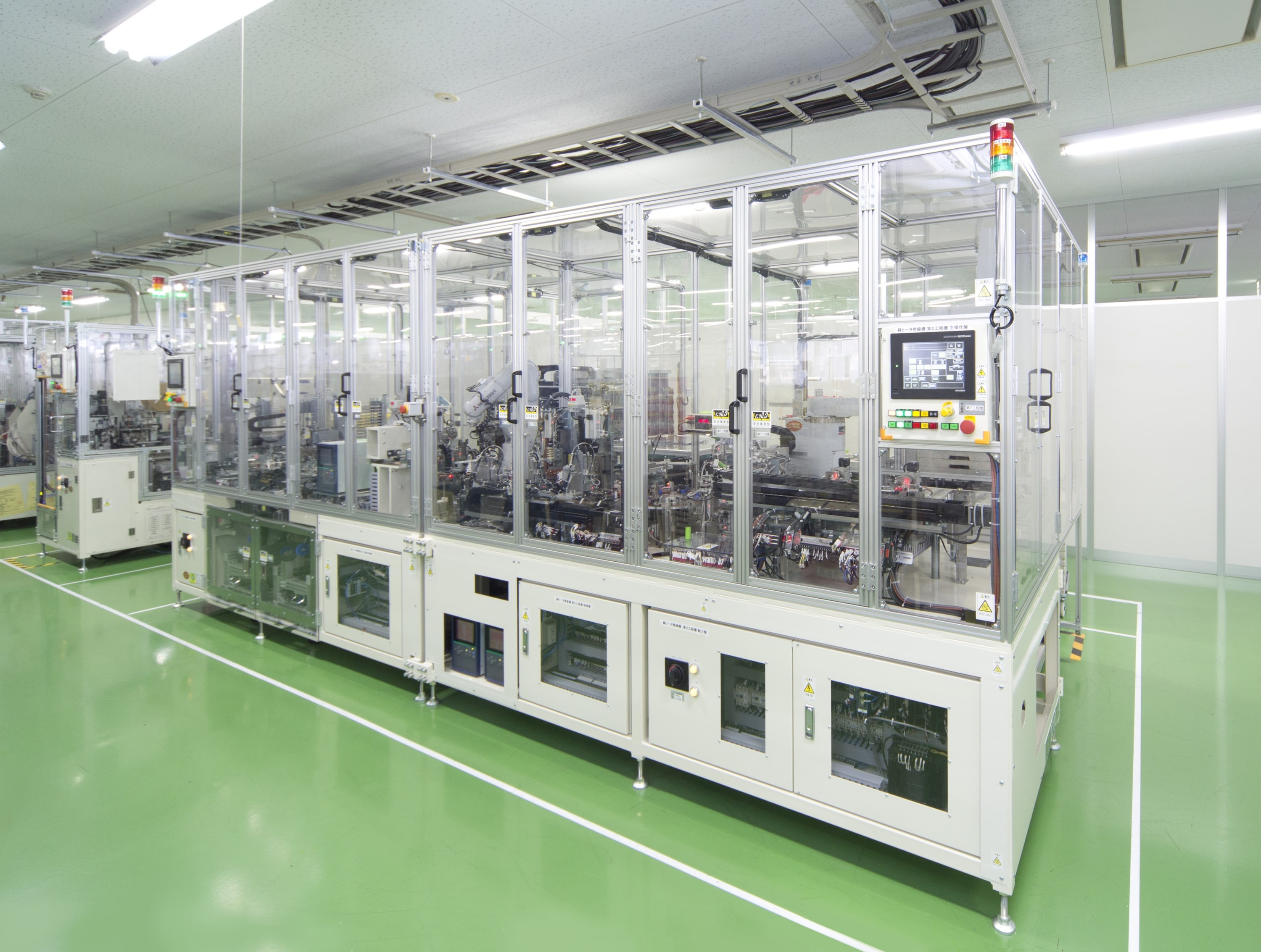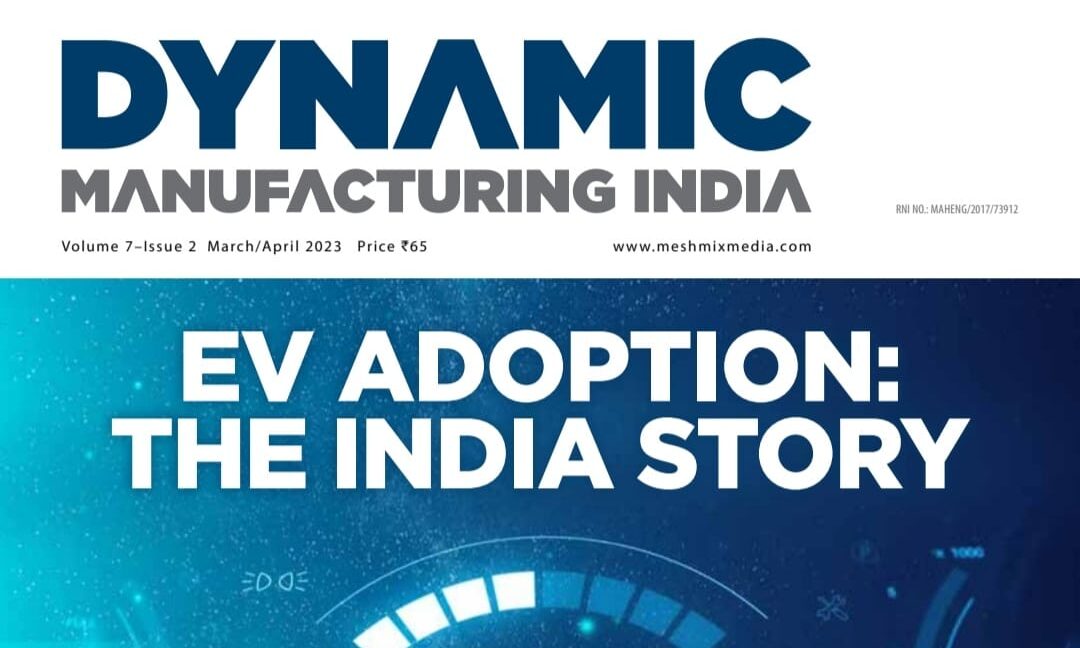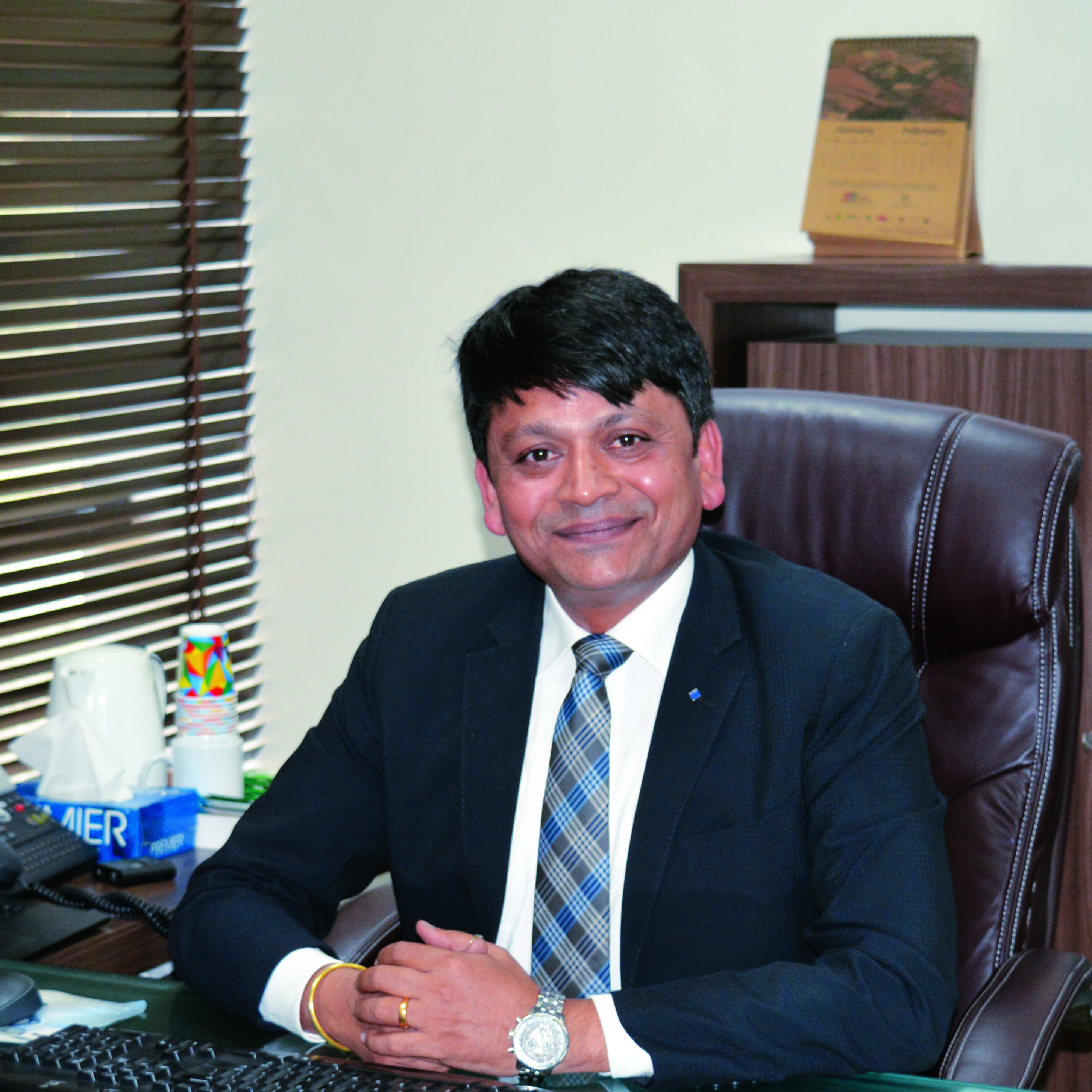e-F@ctory in action

E F@ctory in action : Mitsubishi Electric
The application of e-F@ctory at Mitsubishi Electric´s Kani manufacturing facility, part of its Nagoya Works, Japan, has led to a number of hugely beneficial outcomes. For instance, by redesigning the process and reintegrating a human element where there was once 100% automation, a single line that previously occupied 280sqm has been reduced to a cell of just 44.1sqm. This 84% reduction in space means that the productivity of each square metre of production hall had been increased through greater utilisation.The introduction of a human element to previously automated assembly lines has helped the Kani factory react to changes in product demand Mitsubishi Electric´s Kani factory, which produces motor starters and contactors, was facing a number of significant challenges, not least the sheer number of product variations and possible configurations in its product range – some 14,000 in fact. Demand from customers for greater choice had served to dilute the volumes of each particular product, despite overall product quantities increasing substantially.
Automation not always the answer
In the past, manual production at the Kani factory had given way to totally automated assembly lines, which were ideal for mass production with few product variations where high yields could be realised at high speed. However, one problem lay with the fact that many individual components were required to be in stock and ready for the manufacturing process – without which the lines would not be able to run for any appreciable length of time.
For various reasons, substantial numbers of assembly lines had been optimised to produce a limited range of products, and these would stand still when components ran out. In such a scenario it became difficult and uneconomical to produce small batches.

Overcoming the issue
The solution was to employ engineering know-how built up over many years and combine this with a vision of integrated manufacturing – known as the Mitsubishi Electric e-F@ctory concept. In tandem, existing technology and third-party relationships were utilised through the e-F@ctory Alliance, CLPA and other collaborative engineering groups. Put simply, the objective was to perfect the ´art of manufacturing´ or, as it is known in Japan, ´monozukuri´.
So, where to start? The major challenge was to find the root cause of any inconsistencies. This task involved several approaches, from analysing existing data or collecting new data sets for fresh eyes to review, to looking for links between data that on the surface could appear unlinked. This factor is related to the first principles of IIoT or Industry 4.0.
Studying existing processes, as well as the methodology, revealed that natural, normal, organic growth in the production process had inadvertently led to inefficiencies.
Challenging the assumptions
Resolving this issue at the Kani factory of Mitsubishi Electric led to a re-evaluation of the need of 100% automated lines, which were not necessarily the most efficient. Restoring some human elements could potentially reduce manufacturing anomalies.
Further observations revealed that the automated parts feeding of some larger components not only created a bottleneck, but led to the parts feeders consuming large volumes of space which could, under specific conditions, result in minor damage to the components. Not enough to cause an issue, but enough that the engineers were dissatisfied with the quality level being achieved.
Conversely, the automation of some tasks which had, in the past, seemed impossible, now looked possible through a combination of technologies. An example of this thinking concerned the misalignment of certain screws during the assembly process. The automation system, unaware of the misalignment, would try to insert the screw and cause damage to the entrance of the hole.
Two technologies helped to overcome this problem: the automatic alignment of robots; and combining rotational drives for inserting the screws using torque sensors. As a result, the hole can now be located easily and aligned correctly every time. Moreover, the torque sensor confirms the absence of misalignment and that the screw is tightened to the correct level. The increased use of vision systems, checking for correct assembly and alignment, has also helped to increase the number of right-first-time products.
A further, simpler idea was to etch a matrix code on the body of each product and track it through the various stages. Now, as the product arrives at a workstation, its code is read and the appropriate processes and parts applied. At the end of the manufacturing cycle, each product then has a traceable manufacturing history, making it entirely possible to track the history of individual issues.
Smaller area, greater efficiency
By redesigning the process and reintegrating the human element, a single line, which comprised two 35m-long segments occupying some 280sqm, has been reduced to a cell of just 44.1sqm. This 84% reduction in space means that the productivity of each square metre of production hall has been increased through greater utilisation. Even though a single new cell cannot produce the same volume and speed of units as the original fully automated line, it is now possible to deploy up to 6.3 cells in the same space. In turn, total productivity density is much higher thanks to three key factors: a wider variety of products can be manufactured in smaller batches; one stoppage does not halt the whole of production; and the total number of production lines has increased.
The end result, much to the satisfaction of the Mitsubishi Electric team at the Kani factory, is effective optimisation of both machine and human resources, as well as the production process and space – a true productivity gain.
Growing the e-F@ctory story
While many in engineering are familiar with Japanese manufacturing mantras as Kaizen, Toyota´s 7 principles and Just In Time, few people outside Asia have experienced the e-F@ctory concept. However, as can be seen at the Kani factory, by learning more about Mitsubishi Electric e-F@ctory, manufacturers can achieve their own smart factory concepts – whether they are called Industry 4.0, IIoT or ´Made in China 2025´.
Redesigning the process has led to 84% more floor space at the Kani factory
About Mitsubishi Electric Corporation
With nearly 100 years of experience in providing reliable, high-quality products, Mitsubishi Electric Corporation (TOKYO: 6503) is a recognized world leader in the manufacture, marketing and sales of electrical and electronic equipment used in information processing and communications, space development and satellite communications, consumer electronics, industrial technology, energy, transportation and building equipment.
Embracing the spirit of its corporate statement, Changes for the Better, and its environmental statement, Eco Changes, Mitsubishi Electric endeavors to be a global, leading green company, enriching society with technology. The company recorded consolidated group sales of 4,444.4 billion yen (in accordance with IFRS; US$ 41.9 billion*) in the fiscal year ended March 31, 2018.
For more information visit http://www.MitsubishiElectric.com
*At an exchange rate of 106 yen to the US dollar, the rate given by the Tokyo Foreign Exchange Market on March 31, 2018 ,About Mitsubishi Electric Factory Automation Business Group
Offering a vast range of automation and processing technologies, including controllers, drive products, power distribution and control products, electrical discharge machines, electron beam machines, laser processing machines, computerized numerical controllers, and industrial robots, Mitsubishi Electric helps bring higher productivity -and quality- to the factory floor. In addition, our extensive service networks around the globe provide direct communication and comprehensive support to customers.
For more information please see: www.MitsubishiElectric.com/FAAbout e-F@ctory
e-F@ctory is Mitsubishi Electric´s integrated concept to build reliable and flexible manufacturing systems that enable users to achieve many of their high speed, information driven manufacturing aspirations. Through its partner solution activity, the e-F@ctory Alliance, and its work with open network associations such as The CC-Link Partners Association (CLPA) and The Edgecross Consortium, users can build comprehensive solutions based on a wide ranging ´best in class´ principle.
In summary, e-F@ctory and the e-F@ctory Alliance enable customers to achieve integrated manufacturing but still retain the ability to choose the most optimal suppliers and solutions.
*e-F@ctory is a trademark of Mitsubishi Electric Corporation in Japan and other countries.
*Other names and brands may be claimed as the property of others.
Customer Inquiries
Promotion Section
Overseas Planning & Administration Dept.
Factory Automation Systems Group
Mitsubishi Electric Corporation
Chris Hazlewood
Phone: +81-3-3218-6513
Chris.Hazlewood@eb.MitsubishiElectric.co.jp
http://www.MitsubishiElectric.com/





